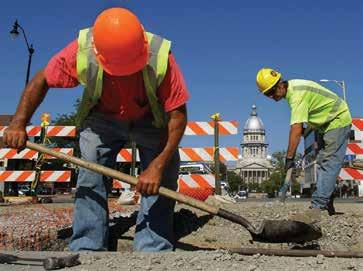










Colliers Securities offers a robust foundation in serving the needs of non-profits, units of state and local government and other tax-exempt entities.
For over 40 years we have served South Dakota’s local and state governments, school districts, counties and cities, underwriting over $6 billion in bonds for South Dakota public entities since 1990.
We look forward to serving your public finance needs!

Tom Grimmond
Sioux Falls, South Dakota
Phone 605.339.9800 | 800.339.1111
tom.grimmond@colliers.com

colliers.com find us under services

Toby Morris
Pierre, South Dakota Phone 605.224.5557 | 877.224.5557 tobin.morris@colliers.com
PRESIDENT
Harry Weller
Mayor, Kadoka
1st VICE PRESIDENT
Carolynn Anderson Finance Officer, Wall
2nd VICE PRESIDENT
Leland Treichel Mayor, Roscoe
TRUSTEES
David Barranco Councilmember, Sioux Falls
Paullyn
Michelle
Dawn
David Reiss Executive Director
Sara Rankin Director of Member Engagement
Emilie Miller Director of Marketing and Communications
Lisa Nold Director of Risk Sharing Services
Lori Butler Director of Finance
Jackie Lopour Accounting Assistant
Rob Peterson Director of Municipal Electric Services
Krista Kerns Administrative Services Coordinator
SD Public Assurance Alliance
Lynn Bren Executive Director
Kristina Peterson Deputy Director
Becky Brunsing Member Services Representative
Jerry Krambeck Member Services Representative
Paytra Nichols Underwriter
sdmunicipalleague.org
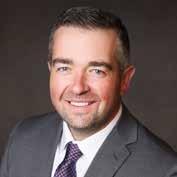
As we conclude the 2024 Legislative session, the staff at the League is already preparing for the spring season and finalizing plans for many opportunities to engage with municipal staff and elected leaders across South Dakota. Numerous options for training and learning are coming up, starting with online election trainings and the SDML District Meetings taking place across the state throughout the months of March and April. Affiliate association meetings will follow in April, May, and June. I encourage you to log on to the newly updated SDML website and review the Community Calendar page to find and register to attend your local District Meeting and affiliate conferences.
I am looking forward to seeing many of you this month at District Meetings and discussing the outcomes of the 2024
Legislative session and what law changes municipalities will face in 2024. The SDML legislative team is present and working on your behalf every day during the 2024 Legislative session to support municipal issues and protect cities from attempts to diminish your ability to serve South Dakota citizens residing within our communities. As we conclude this session, I want to thank those that visited with their local legislators and advocated for municipal matters. Through your voice and advocacy our concerns are heard, and this session Municipal League members made a great impact in bringing positive outcomes on behalf of their cities. I am grateful and humbled to be able to work for each of you.
Please remember, we are always available to you as a resource for your communities and I urge you to contact us if you have municipal issues or questions at 1-800-658-3633 or via email at david@sdmunicipalleague.org. ■

It's SDML newsletter time again. How time flies.
When you read this, the Legislative session will be winding down. It amazes me the number of bills that have come before the various committees to take testimony, then pass to to the House and Senate for a vote. As your president I feel obligated to be in Pierre on numerous days to watch the legislative system work.
I am looking forward to our District 27 legislators meeting in Kadoka on March 8. School officials, county commissioners, city officials, local patrons, and people seeking office on all levels have been invited. I hope we have a great turnout, and let's hope the weather is favorable. It is March.
I am also looking forward to all the SDML District Meetings that are also just around the corner. We will visit ten cities over several weeks in March and April. It's always a good time, and I hope this year will be the same as well.
As I look at my calendar, your president will be busy with various functions of the SDML. (Also, the New York Yankees will be playing baseball as of March 24. Sorry if I upset you because I am a die-hard Yankees Fan.)
If you wish to reach me, my e-mail address is harry.weller@k12.sd.us and my cell phone is 605-212-9659. I do not text message, sorry.
Have a great spring, but be prepared for the inevitable snow. ■
HARRY WELLER | SDML PRESIDENTDISTRICT 7
DISTRICT 5
Springs
ELECTION
5
DISTRICT 4
Gregory
DISTRICT
DISTRICT
DISTRICT 3
DISTRICT 2
DISTRICT
DISTRICT 6






























How do you learn and grow in local municipal government? The answer is simple—join and be an active member of the SOUTH DAKOTA MUNICIPAL LEAGUE and its affiliates!










and growth! Then to top it all off – the past and current staff at the SDML as well as the many, many people I have had the opportunity to meet over the years!
In celebration of the SDML’s 90th anniversary, it is humbling to realize what a great honor it has been to be a part of this amazing organization for 21 of those years and oh, the memories...


When I started my career in 2003 as the City of Philip Deputy Finance Officer, I had no clue what local municipal government entailed. I thought my job would be things like drafting correspondence, answering phone calls, and making bank deposits. WOW was I naïve! Municipal government is so much more – meetings, budgets, laws and ordinances, infrastructure, various departments, funding, building regulations, taxes, parks and recreation, audits, elections, insurance, code enforcement, human resources, and the list goes on and on.


















How does one learn about municipal government along with the various duties outlined in a job description, especially “other duties as assigned?”
A big thanks to Monna Van Lint, City of Philip Finance Officer, for introducing me to the South Dakota Municipal League! I have also been blessed with amazing support from my mayors and council members that encourage involvement

Earlier in my career, I sat on the SD Association of Code Enforcement Board (bless John Irvine’s soul for being a wonderful mentor). Code enforcement in South Dakota communities has grown immensely over the years – thanks to the SDML! The SD Governmental Human Resource Association was also established during my time, and I was fortunate enough to be the president in 2018/2019. These are only two of the various affi liate groups that provide specifi c trainings and resources through the SDML. I remember attending my first finance officer school (was that seriously 21 years ago; it seems like yesterday). I cannot forget to mention the annual conference with so many memories from networking, learning, golf tournaments, the infamous mock council trials, and entertainment. The SDML has and continues to provide a necessary support system to all municipalities in South Dakota!





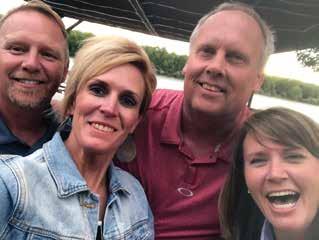










Then as time went on, I got involved with and still continue to sit on the SDML Public Health and Safety Policy Committee. This experience has broadened my understanding of how state laws and other issues affect municipalities – and may have turned me into a legislative session nerd. The approach in which the SDML lobbyists provide
































when bringing or defeating a bill at the capital has been and continues to be vital for the continued success of the municipalities in South Dakota.




In 2019, I was elected to serve on the SDML Workers’ Compensation Fund Board of Trustees and am currently the chairperson. This organization provides most municipalities, all 66 counties, and other special districts, the opportunity to purchase workers’ compensation coverage through pooling. The SDMLWC was established in 1987 and provides excellent coverage and benefits to its members which have grown over the years, including the First Responders Program and online training options.












My time as the SDML District 8 Chair started during the 2020 SDML Annual Conference in Aberdeen. Due to a South Dakota blizzard, I was unavailable to attend the business meeting where I was appointed by Debbie Houseman, SDML President at the time. I still remember the subject line from Yvonne’s email about the appointment: “How much can you handle???” Well, I’m still here. District 8 Chair was previously held for many years by current SDML President Harry Weller. I am honored to follow his legacy and be a part of the board – serving District 8 and the municipalities in South Dakota.







to get involved. Make sure you are part of the affiliate email listservs. They are a great resource. No matter what you may be going through, someone else already has or will be. Although we say, “Don’t reinvent the wheel,” we must remember that one size does not always fit all –adjust it to fit the best interests of your municipality. The learning opportunities and the people you will meet are like no other organization. Friendships, or as I call them, my extended family, are a lifeline in this profession. This has all been made possible through the SDML!






While I have been with the City of Philip my entire municipal government career, the last sixplus years have been as the City Administrator. It has been and continues to be an honor to serve my community and the municipalities. Not many people can say they still love their job after over 20 years. Thank you to everyone that has and continues to play an important role in my life and career! You are my extended family!
















Congratulations SDML on your 90th anniversary! What a milestone to celebrate as well as to acknowledge the past and current board members and staff for the foresight in establishing and maintaining this essential support system for the municipalities in South Dakota! I look forward to being here and a part of your continued success!
The opportunities and resources afforded through the SDML are essential and I encourage everyone






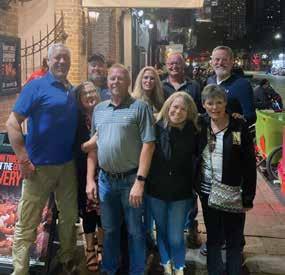


















It is important to regularly review Fair Labor Standards and Child Labor regulations PRIOR to seasonal hiring. Often, we become complacent and continue to do things the way we have always done them. Reminders like this give us an opportunity to verify that we are adhering to the law. In this economy, none of us can afford to make mistakes that cost our communities back wages for overtime.
The Fair Labor Standards Act (FLSA) allows for specific exemptions from minimum wage and overtime including administrative, executive, and professional exemptions. For purposes of this article, we will assume that most employees hired for seasonal and temporary positions are non-exempt from minimum wage and overtime provisions. This means that these employees will be eligible to receive minimum wage at $11.20 per hour. Seasonal and temporary employees are eligible to receive 1.5 times the hourly wage for all hours worked over 40 in any given workweek as required by FLSA.
Section 13(a)(3) provides an exemption from the minimum wage and overtime provisions of the FLSA for "any employee employed by an establishment which is an amusement or recreational establishment, if (A) it does not operate for


iStock.com/Daisy-Daisy
more than seven months in any calendar year, or (B) during the preceding calendar year, its average receipts for any six months of such year were not more than 33-1/3 per centum of its average receipts for the other six months of such year."
It would seem apparent that a swimming pool or other facility that is open only for the summer months would qualify for this exemption from overtime and minimum wage provisions of the FLSA. But please note, if seasonal employees who qualify for this exemption perform other jobs for the city, this exemption from overtime may not apply.
Also please review the “FLSA Child Labor Regulations Refresher” article on pages 9-11 of this publication. It is important to consider the duties that employees under age 18 are permitted to perform. With limited resources and limited staff, it becomes essential to understand the law.
The majority of the questions that the Municipal League receives are regarding “children” under eighteen years of age (16-17) and if they are allowed to run lawn mowers. The League discourages cities from doing so but we will leave that to you and your city attorney to work out. It would also be prudent to review the Child Labor Violation Penalties which is in a later article as well.
These laws can be complicated and difficult to sort out. If there are questions, employers are required to follow the law that provides the greatest benefit to the employee.
SD Codified law can be found online at sdlegislature.gov/ Statutes/Codified Laws under Title 60 Labor and Employment. The South Dakota Department of Labor staff is also a great resource. You also have access to the knowledgeable SDML staff (800-658-3633) and the SD Governmental Human Resource Association. ■
Reprinted from the United States Department of Labor Wage and Hour Division website. The information in this article is a snapshot of what is provided via the DOL website. For more details, visit www.dol.gov/whd/regs/compliance/childlabor101.pdf
With summer just around the corner, it may be a good time to have a little refresher course on the Fair Labor Standards Act (FLSA) regarding child labor regulations. Employers may employ youth only under certain conditions and child labor regulations vary significantly depending on the age of the youth.
The FLSA child labor provisions are designed to protect the educational opportunities of minors and prohibit their employment in jobs and under conditions detrimental to their health or well-being. The provisions include restrictions on hours of work for minors under 16 and lists of hazardous occupations orders for both farm and non-farm jobs declared by the Secretary of Labor to be too dangerous for minors to perform. Further information on prohibited occupations is available from https://www.dol.gov/agencies/whd/ youthrules.
Other federal and state laws may have higher standards. When these apply, the more stringent standard must be observed. All states have child labor provisions, compulsory school attendance laws, and establish the minimum ages and conditions under which youths may operate motor vehicles.
14 Young persons 14 and 15 years of age may be employed outside school hours in a variety of nonmanufacturing and non-hazardous jobs for limited periods of time and under specified conditions.
16 Basic minimum age for employment. 16- and 17-yearolds may be employed for unlimited hours in any occupation other than those declared hazardous by the Secretary of Labor.
18 Once a youth reaches 18 years of age, he or she is no longer subject to the Federal youth employment provisions.
The following list, which is not exhaustive, are jobs that 14and 15-year-olds may not be employed in:
• They are prohibited from working in any of the Hazardous Orders or in most occupations involving transportation, construction, warehousing, communications, and public utilities.
• They may not work in processing, mining, in any workroom or workplace where goods are manufactured or processed, in freezers, or in meat coolers.
• They may not operate or tend any power-driven machinery, except office machines.
• They may not perform any baking operations.
• They may not be employed in youth peddling, sign waving, or door-to-door sales activities.
• They may not work from ladders, scaffolds, or their substitutes.
• They may not be employed to catch or coop poultry.
The following is the list of jobs the Secretary of Labor has determined will not interfere with the schooling, health, and well-being of 14- and 15-year-olds and therefore MAY BE performed by such youth. Any job not specifically permitted, is prohibited.
• They may work in most office jobs and retail and food service establishments.
• They may be employed in occupations such as bagging groceries, office work, stocking shelves, and cashiering.
• They may work in intellectual or artistically creative occupations such as teacher, musician, artist, and performer.
• They may perform limited kitchen work involving the preparation of food and beverages.
• They may perform only limited cooking duties (see Fact Sheet #58). They may cook over electric or gas grills that do not involve cooking over an open flame and they may cook with deep fryers that are equipped with and utilize a device that automatically lowers the baskets into the hot oil or grease and automatically raised the baskets from the hot oil or grease.
• They may clean cooking equipment and surfaces (not otherwise prohibited), and filter, transport, and dispose of grease as long as the temperature of the surfaces, containers, and grease do not exceed 100°F.
• Properly certified 15-year-olds may work as lifeguards and swimming instructors at traditional swimming pools and water amusement parks.
The Hazardous Occupations Orders (HOs) for Nonagricultural Employment
These Orders are published in Subpart E of Part 570 of Title
The FLSA establishes an 18-year minimum age for those nonagricultural occupations that the Secretary of Labor finds and declares to be particularly hazardous for 16- and 17-yearold minors, or detrimental to their health or well-being. In addition, Child Labor Regulation No. 3 also bans 14- and 15-year-olds from performing any work proscribed by the HOs. There are currently 17 HOs which include a partial or total ban on the occupations or industries they cover.
Investigators of the Wage and Hour Division who are stationed across the U.S. enforce the youth employment provisions of the FLSA. As the Secretary of Labor’s representatives, they have the authority to conduct investigations and gather data on wages, hours, and other employment conditions or practices in order to assess compliance with all the provisions of the FLSA.
An employer that violates the youth employment provisions may be subject to civil money penalties (CMPs). The amount

regulatory factors to the specific circumstances of the case.
• As a general matter, child labor CMP assessments will be higher if the violation contributed to the injury or death of the youth involved in the violation. The severity of any such injury will be taken into account in determining the amount of a CMP.
• CMP assessments may be decreased based on the size of the business.
• CMP assessments will reflect the gravity of the violation and may be doubled if the violation is determined to be willful or repeated.
A CMP assessment for a violation that causes the death or serious injury of a minor is subject to a higher statutory cap.
• An injury qualifies as a “serious injury” for this purpose if it involves permanent or substantial harm. Both the significance of the injury and the duration of recovery are relevant in determining whether an injury is serious.
• If more than one violation caused a single death or serious injury, more than one CMP may be assessed.
• CMP assessments based on the death or serious injury of a minor may be doubled up to a higher statutory cap if the violation is determined to be willful or repeated.
For current maximum CMP amounts, please visit www.dol. gov/agencies/whd/flsa.
For information about the federal child labor requirements, visit YouthRules! at www.youthrules.dol.gov.
For additional information, visit the Wage and Hour Division website at www.dol/gov/agencies/whd or call the toll-free information and helpline, available 8 a.m. to 5 p.m. in your time zone, 1-866-4USWAGE (1-866-487-9243). ■


Fact Sheet # 60: Application of the Federal Child Labor Provisions of the Fair Labor Standards Act (FLSA) to the Employment of Lifeguards
Reprinted from http://www.dol.gov/whd/ fact-sheets/60-child-labor-lifeguards
The Fair Labor Standards Act (FLSA), administered by the U.S. Department of Labor's Wage and Hour Division (WHD), requires that most employees be paid at least the applicable federal minimum wage and overtime pay for all hours worked at time and one-half the regular rate of pay after 40 hours in a workweek. The FLSA also includes child labor and recordkeeping provisions. While some seasonal and recreational establishments such as outdoor swimming pools may be exempt from the minimum wage and overtime requirements of the FLSA if they meet certain tests, this exemption does not apply to the child labor or record keeping provisions of the FLSA.
The federal child labor provisions were enacted to protect the educational opportunities of minors and prohibit their employment in jobs and under conditions detrimental to their health or well-being.
Once a minor reaches 18 years of age, the federal child labor provisions no longer apply to their employment.
Sixteen and 17-year-olds employed as lifeguards may perform any nonhazardous job, for unlimited hours. The Secretary of Labor has declared 17 Hazardous Occupations Orders (HOs) which restrict the types of jobs and/or industries in which youth under 18 years of age may be employed. Not exhaustive, the following list represents some common tasks which occur at establishments that employ lifeguards. Under the federal child labor provisions, workers under 18 years of age generally may not:
• Operate or assist to operate, clean, oil, set up, adjust, or repair certain power-driven woodworking, metalworking, bakery, meat processing, and paper products machinery - including meat slicers, compactors, balers, mixers, and saws.
• Drive or serve as an outside-helper on a motor vehicle on a public road; but 17-year-olds who meet certain specific requirements may drive automobiles and trucks that do not exceed 6,000 pounds gross vehicle weight for limited amounts of time during daylight hours as part of their job (see Fact Sheet #34).
• Operate power-driven hoists such as elevators, cranes, derricks, and high-lift trucks. However, 16- and

17-year-olds may operate and assist in the operation of most water amusement park and recreation establishment rides.
• Load, operate, or unload power-driven balers and compactors used in the disposal of waste. A limited exemption exists that permits the loading, but not the operating or unloading, of certain scrap paper balers and paper box compactors under certain specific conditions (see Fact Sheet #57).
14 and 15 years of age
Fifteen-year-olds, but not youth less than 15 years of age, may be employed as lifeguards at traditional swimming pools and most facilities of water amusement parks. Such employment must meet the following conditions:
• The 15-year-old must be trained and certified by the American Red Cross, or a similar certifying organization, in aquatics and water safety; and
• The 15-year-old must be employed in compliance with all the other applicable provisions of the federal child labor rules contained in Child Labor Regulations No. 3 (see Subpart C of 29 CFR Part 570), including the restrictions on the hours and times of day that 15-year-olds may be employed as discussed below; and
• The federal child labor rules require that 15-year-olds who are employed to teach or assist in teaching others how to swim must also be certified as swimming instructors by the American Red Cross or some other similar certifying agency.
The occupation of lifeguard, as per 29 C.F.R. § 570.34(l), encompasses the duties of rescuing swimmers in danger of drowning, the monitoring of activities at a swimming pool to prevent accidents, the teaching of water safety, and providing assistance to patrons. Lifeguards may also help to maintain
order and cleanliness in the pool and pool areas, conduct or officiate at swimming meets, and administer first aid. Additional ancillary lifeguard duties may include checking in and out such items as towels, rings, watches and apparel. Properly certified 15-year-old lifeguards are also permitted to use a ladder to access and descend from the lifeguard chair; use hand tools to clean the pool and pool area; and test and record water quality for temperature and/or pH levels, using all of the tools of the testing process including adding chemicals to the test water sample. Such youth would, however, be prohibited from entering or working in any chemical storage areas, including any areas where the filtration and chlorinating systems are housed.
As mentioned, a core and defining duty of a lifeguard is the rescuing of swimmers in danger of drowning, often by entering the water and physically bringing the swimmer to safety. Under 29 C.F.R. § 570.34(l), any employee under the age of 16 whose duties include this core duty—such as a “junior lifeguard” or a “swim-teacher aide”—or whose employment could place him or her in a situation where the employer would reasonably expect him or her to perform such rescue duties, would be performing the duties of a lifeguard while working in such a position. For such employment to comply with these child labor provisions, the employee
would have to be at least 15 years of age and possess the proper certification.
A traditional swimming pool means a watertight structure of concrete, masonry, or other approved materials located either indoors or outdoors, used for bathing or swimming and filled with a filtered and disinfected water supply, together with buildings, appurtenances and equipment used in connection therewith. A water amusement park means a facility that not only encompasses the features of a traditional swimming pool, but also includes such additional attractions as wave pools, lazy rivers, activities areas and elevated water sides.
Properly certified 15-year-olds may be employed as lifeguards at water amusement park wave pools, lazy rivers, and activities areas, but not at the top of elevated water slides. Generally, all youth under 16 years of age are prohibited from operating or tending power-driven equipment and may not assist the public as they enter, “ride,” and leave waterpark or amusement-park-type rides. Thus, minors under 16, even if properly certified as lifeguards, may not be employed as dispatchers, attendants, or slide monitors at the top of elevated water slides. Fifteen-year-olds who are properly certified may be employed as lifeguards stationed at the splashdown pools located at the bottom of elevated water slides.



Youth under 16 years of age may not be employed as lifeguards at natural environment facilities such as rivers, streams, lakes, ponds, quarries, reservoirs, wharfs, piers, or ocean-side beaches.
The employment of 14- and 15-year-olds, including those 15-year-olds employed as lifeguards, is generally limited to:
• Outside of school hours;
• 3 hours on a school day, including Fridays;
• 8 hours on a non-school day;
• 18 hours in a week that school is in session;
• 40 hours in a week that school is not in session.
Also, such youth may not work before 7 a.m. or after 7 p.m. (except from June 1 through Labor Day when the evening limit is extended to 9 p.m.).
Fourteen- and 15-year-olds, including properly certified 15-year-olds who are employed as lifeguards, may not be employed in the following occupations that are often found at establishments that have traditional swimming pools:
• Work involving the operation or tending of any powerdriven machinery and hoists (except office machinery). This prohibition includes work involving most amusement park and recreation establishment rides – including
dispatchers on elevated water slides – and power-driven lawn mowers and trimmers.
• All baking and most cooking. These minors may perform cooking with electric and gas grilles that does not involve cooking with open flames. They may also cook with deep fryers that are equipped with and utilize devices that automatically lower and raise the fryer baskets into and out of the hot oil or grease. They may not operate NEICO broilers, pressure cookers, ovens or rotisseries.
• The cleaning of cooking equipment and the filtering, transporting, and disposing of hot oil and grease when the surfaces or hot oil or grease exceed 100° F.
• All work in construction, including demolition and repair.
• All work involving the use of ladders or scaffolding, except properly certified 15-year-old lifeguards may use a ladder to access and descend from the lifeguard chair.
• All work in freezers, but they may enter freezers equipped with safety latches, for brief periods of time, to retrieve items.
Youth under 14 years of age are generally not allowed to work in nonagricultural occupations. However, the FLSA does allow a parent who is the sole-owner of a business to employ his or her child in any occupations other than mining,




“Financial plans are more than just about money. They’re really about education and providing you with the knowledge you need to make the best decisions for your community.”
Miranda Kleven, PE, AE2S Special Projects Engineer








manufacturing or those declared to be hazardous by the Secretary of Labor.
For more information on the FLSA child labor provisions, including a complete list of all hazardous occupation orders, visit the YouthRules! Web site at www.youthrules.gov.
For additional information on the Fair Labor Standards Act, visit the Wage and Hour Division Web site: http://www. dol.gov/whd/ or call the toll-free information and helpline, available 8 a.m. to 5 p.m. in your time zone, 1-866-4USWAGE (1-866-487-9243).
When state child labor laws differ from the federal provisions, an employer must comply with the higher standard. Links to your state labor department can be found at http://www.dol. gov/whd/contacts/state_of.htm.
This publication is for general information and is not to be considered in the same light as official statements of position contained in the regulations. ■

South Dakota sales tax, including municipal sales tax, is collected based on the delivery address for all taxable sales. This includes products and services.
Retailers and service providers can verify the applicable sales tax rate for a South Dakota address using the Department of Revenue’s (DOR) tax rate lookup database provided on the department’s website. Retailers and service providers rely on the database to provide accurate tax rate information. The Department of Revenue relies on each municipality imposing a municipal sales or gross receipts tax to provide the most up to date address information to keep the database as accurate as possible.
To ensure your city’s municipal tax revenue is being collected accurately, it is vital that the State Department of Revenue has the most current city boundaries and all addresses within those boundaries. When a city has a boundary change, a street or address change, or additional addresses created, the city must notify the Department of Revenue.
Notices of annexations and address changes or additions are submitted through the Department’s “Notice of Annexation” webpage, https://sddor.seamlessdocs.com/f/2043 and “Notice of New or Updated Addresses” webpage at https:// sddor.seamlessdocs.com/f/5028. These pages provide the form to complete and allow you to upload all necessary documents regarding boundary changes and address updates.
When submitting a boundary change you will need to include (preferably PDF or Excel formats):
• Copy of the resolution or amendment
• Updated city boundary map (aerial map is preferred)
• List of addresses within the annexed area
When submitting address updates, you will need to include (preferably PDF or Excel Formats):
• List of the addresses - indicate if these are new, corrected or updated addresses
• Map of address locations (aerial map is preferred)
Once the notice is submitted you will receive an email acknowledging receipt of the form.
The Department of Revenue wants to ensure your city is receiving the city tax you are due. This can only happen with your continuous assistance to ensure the department’s information is accurate.
If you would like to verify the addresses the department currently has for your city, please email DOR.TechHelp@ state.sd.us for directions and assistance.
Find information regarding municipal sales tax online at https://dor.sd.gov/businesses/taxes/municipal-tax, or by calling the Taxpayer Assistance Center at 1-800-829-9188. ■

A month ago, the groundhog came out of his den and declared that Spring would be on time this year! Hooray!
As I prepare this, I wonder if Mother Nature got the same memo, because while I do love the idea of not having to manage any more snow, I also understand the importance of the moisture and time of recovery that the snow brings for our environment. Understanding how simple things like an extra inch of snow cover impacts your lawn, your trees, your concrete is all part of being prepared.
Being prepared doesn’t just mean making sure you have enough snacks for the safety meeting (because let’s be honest, there are few things that are better motivators than food!) it also means making sure that your organization is prepared for those crazy weather events we could have, environmental change and events, public health matters, and community engagements and communication needs.
Even though we are on the cusp of Spring, we need to remember that it’s common for South Dakota to get a few inches of snow even as late as June in some parts of the state. As you look ahead for the upcoming wind and hail season, be aware that there still may be a need for that ice and snow melt, so don’t tuck it too far away in the storage room. Those snow shovels and plow blades, go ahead and run them through the spring check list, but be mindful that there could still be that one last blast that will sneak up on you.
Now is the time to take a look at your weather response policies. If we have some flooding, do you have the appropriate signage and enough of

them? Do all your signs for marking closed roads and other hazards meet the Manual for Uniform Traffi c Control Devices? What is your policy for notifying the public as to these hazards? Does your team know where to find these policies, and the resources needed to complete the various tasks associated with the responses?
Having these checklists and policies in place ahead of those weather events, and training on them now before there is an event will create a much more efficient response. Local governments are the first point of contact during an emergency event, and your community looks to you for guidance. Being prepared will make being in that spotlight much easier.
On the other side of the weather coin, what if we don’t get any more snow, what if we have drought like conditions?
We all know the impact of droughts on South Dakota. To be prepared for the risks associated with droughts, we would encourage you to take a look at your mutual aid agreements. Are you still able to provide the services and aid that you’ve agreed to render? Are those that you’ve entered into these agreements still able to provide the services they have agreed to? Do your
mutual aid agreements outline how employees will be taken care of, and address liability to third party claims? Has your local counsel reviewed the agreements to make sure that they are appropriate in form and execution? Do the departments that are impacted by these agreements know of the commitments that have been made?
Reviewing your own inventory to make sure that you have again, not only the policies and procedures in place for monitoring for those environmental challenges, but also the resources to combat things such as wildfires will create a level of preparedness that will help you face these types of challenges with ease.
March 2024 will mark the four-year anniversary of the COVID-19 pandemic which shut down schools and the majority of businesses. We still hear about COVID, and we all have family and friends who still endure a bout of COVID from time to time. But now is the time to reflect on the things that we have learned from COVID.
Spring brings with it exacerbating health irritants. My friends with allergies are so excited for all the pollen that those spring flowers will help thrust into the air! The local governments will be
tasked with communicating any public health concerns and campaigns. Have you collaborated with your team on how this will be accomplished? How will you address keeping your team safe while also affording all those services required of you?
Maintaining engagement with your communities is critical in keeping them safe, and establishing expectations that can be achieved by you and your team.
We all know winter is a doozy on our roads and buildings. Now is the time to start checking your buildings to make sure that just as they needed to transition from heat to cool, they’re now ready to transition back to cool from heat.
As we have experienced a couple thaws already, now is a good time to inspect your buildings, make sure that roofs are
prepared for the rainy season… did you have any damage from ice dams? Are the gutters all free from damage and debris which would cause an overflow of water back into places it shouldn’t be? Are your streets ready for the uptick in travel from visiting families coming to your community for tourism or to see friends and relatives? Are your sidewalks free of trip hazards? Did the snow sweep away any of the ground cover from your playground equipment?
Planning your maintenance activities now to focus on areas that see the most wear and tear over the winter months will help reduce the risks which result in claims.
We have alluded previously in this article that there are people coming to town, we’ve discussed that our public areas need to be checked and prepared

for those guests. Let’s not forget that when these folks are coming to town and want to rent out that park shelter, community hall, or fair ground area that a facilities use agreement should be used.
We’ve put out several articles identifying the purpose and importance of these documents. I’ll highlight it again, the purpose of these documents is simply to transfer the risk back to the host, who has the most control over the risks that are created by an event being conducted on the organizational property.
The facilities use agreements outline the rights and responsibilities of the host and property owner. These agreements should be reviewed and double-checked by your local counsel to ensure that you have appropriately addressed the responsibilities of the


host, and the rights of your organization as it relates to risk transfer and building maintenance.
Spring events aren’t just confined to those weddings and family reunions hosted by private citizens. As you prepare for your spring and summer festivities, consider if you have appropriate vendor contracts in place, do you have a check list for the items that you expect to receive from your vendor? Does your team know how to execute the agreements? Have you notified your liability coverage to ensure that you have appropriate coverage in place for these events? Do you have good emergency response plans in place for these events – not just to respond to emergencies within the event, but also to get around the area to address emergencies in adjacent locations to your event? Has your event considered suffi cient parking for the
anticipated crowd response, and how have you addressed people moving?
Keeping communities safe is a key role in local governments. Being prepared is critical to ensuring that you are able to keep your communities safe, but also that if there is an incident or event, you are able to quickly respond with the appropriate resources. The response from your community and those around you will reflect how prepared you were.
The SDPAA encourages all local governments, whether you’re a Member or not, to take initiative-taking action now, to get prepared for the upcoming season.
As always, if you’re not a Member and want more information, we invite you to reach out to us at any time. Our contact information is on our website – www. sdpaaonline.org. ■
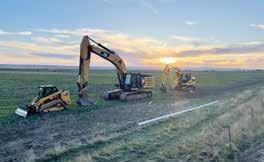
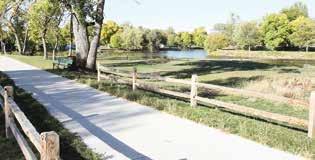

Got a bigger story to tell? It might


PIERRE, S.D. – South Dakota Attorney General Marty Jackley announced that the overall number of criminal offenses reported statewide in 2023 was down 2.57 percent compared to 2022.
The Crime in South Dakota 2023 Report indicated that the number of reported criminal offenses was at 67,145 in 2023. That is a decrease from the 68,917 reported in 2022.
“Law enforcement statewide has been proactive and diligent in fighting crime, and those efforts are working,” said Attorney General Marty Jackley. “Not only is law enforcement focusing on violent crimes, but also the prevention and enforcement on drug crimes involving methamphetamine and fentanyl.”
The more serious crimes, which include such offenses as homicides, sex offenses, and aggravated assaults, totaled 45,905 offenses in 2023, compared to 48,249 in 2022. The number of less serious offenses,
which include such crimes as DUI and disorderly conduct, totaled 21,240 in 2023, compared to 20,668 in 2022.
“Crime unfortunately is always part of our communities, which is why it remains important for law enforcement agencies to continue receiving the support of their local governments and citizens,” said Attorney General Jackley. “That support helps law enforcement better protect our communities.”
Other category numbers indicate:
• There were 18 homicides reported in 2023, down from 22 in 2022.
• Aggravated assaults were at 2,081 in 2023, down from 2,190 in 2022.
• DUI arrests were at 5,412 in 2023, up from 5,406 in 2022.
• Total drug offenses increased to 6,315 compared to 6,269 in 2022.
• Drug offenses involving methamphetamine were at 3,018 in 2023, compared to 3,547 in 2022.
• Fentanyl offenses are included in the “Other Narcotics” category. There were 237 such other
narcotics offenses reported in 2023, compared to 218 in 2022.
“Drug crimes, especially methamphetamine and fentanyl, continue to be a significant problem in South Dakota with more than 10 pounds of fentanyl being seized in South Dakota last year,” said Attorney General Jackley. “That continues to be a major focus for federal, state and local law enforcement throughout the state.”
The crime report is compiled by the Attorney General’s Criminal Statistical Analysis Center (SAC) and is the most accurate and comprehensive compilation of South Dakota criminal statistics as it reflects the actual arrest and reporting information by South Dakota law enforcement. Criminal statistics help identify trends in criminal activity that assist in crime prevention and enforcement efforts across South Dakota.
This year’s full Crime in South Dakota Report can found https://sdcrime.nibrs. com. ■



Legislative Rib Dinner Feb. 6, 2024 | Fort Pierre, SD
It was a packed house at the South Dakota Municipal League's Rib Dinner in February. Over 230 people attended the annual event, which provides association members with the opportunity to network with counterparts from across the state, as well as bend the ear of local legislators on hot button issues impacting municipalities. This year, the traditional rib dinner was accompanied by custom cookies in celebration of the League’s 90th anniversary and new logo. The event was held at Drifters Event Center in Fort Pierre on Feb. 6.

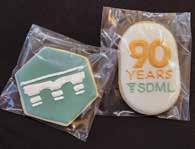












NEW



Building on D3 series compact track loader success, the all-new, next generation previous series, improving on the features that made the previous models so popular. and 265 elevate Caterpillar’s loader reputation through improved engine performance,











generation Cat® 255 and 265 Compact Track Loaders are a ground-up redesign of the popular. The first next generation models in the compact track loader line, the 255 performance, lift and tilt performance, stability, operator comfort and technology.


Reprinted from National League of Cities, www.nlc.org.
Recent research by MissionSquare Research Institute highlights key strategies and actions public service employers can take in 2024 to be employers of choice.
Predicting the future can be a fool’s game, particularly when it concerns the pace of change in artificial intelligence. So, while that technology will continue to have impacts on state and local government in 2024, the list that follows focuses on other areas where public sector managers can make a difference for their workforce in the new year:
Generational shift in the workforce happens automatically as more older workers retire. However, the challenge of attracting younger candidates to the public sector is a matter of familiarization, promotion, and engagement. Familiarization can start at an early age with visits to city hall or the state capitol and robust civic education. As K-12 students think about career choices, public employers should actively promote explorer programs, job shadowing, internships, or short-term service projects. Schools of higher education can also play a role in enhancing the interest of those inclined to public service to select a career in state and local government.
The Institute’s survey of public employees revealed that 49% had some prior part-time or temporary experience with a public agency before taking a full-time job. Bolstering such opportunities may be key to increasing future job applications.
For younger job seekers, motivation often extends beyond salary. In both the 35 and under study and a survey of government fellowship applicants, the factors most often motivating public sector employment were job security, meaningful work, an inclusive workplace culture, and personal satisfaction from being of service to their community. Engaging with applicants and new employees to promote these intangibles, listen to their interests, and collaborate on professional development can lead to long-term workforce stability.
In the public sector, Defined Benefit (DB) retirement plans remain the norm, with most employers also offering a supplemental Defined Contribution (DC) plan or some hybrid. DC plans typically entail the individual participant deciding whether to enroll, in what amount, and how to invest their funds. Given the number of other benefits decisions facing new employees and the tendency among many younger
staff to consider retirement as a far-off event, participation remains low.
Auto-enrollment and auto-escalation provisions enroll all employees at some pre-set default level while allowing them to opt out or change the contribution amount. While such provisions are not new, the new Secure 2.0 law will make them even more common within the private sector.
Governments that had not previously implemented auto features or similar agreements with employee bargaining groups may find that doing so both increases retirement savings and makes for a more financially secure workforce.
Two-thirds of public sector employees worry about personal finances while at work. In addition, 64% are worried about inflation, and 59% are considering leaving their jobs in the near future. Coupled with a lack of competitive salaries ranked as the top reason for leaving, employers would do well to consider how to enhance the value of their salaries and benefits to employees as well as the provision of financial literacy education to help employees optimize the use of their resources.
Retirement and health benefits, paid time off, and nontraditional or voluntary benefits all contribute to employees’ financial well-being, along with their understanding of key financial concepts.
3 4
While the federal debate on student debt continues, state and local governments will play a critical role in understanding and responding to the debt carried by their current or prospective employees.
In the Institute’s survey on morale, motivation, and retention, 80% of public employees indicated that their debt is a problem, and 77% consider it an impediment to saving more for retirement. Further, 26% currently bear student loan debt for themselves, and 11% bear student loan debt for a family member. Among those 35 and under, 25% are worried about paying back their student loans.
But how does that translate to those working in specific occupations? The Institute is finalizing a study looking at debt loads for specific degrees and how they impact the ability to hire for hard-to-fill positions. Knowing, for example, the likely debt of a civil engineer, registered nurse, elementary school teacher, or police officer can help employers make more informed choices about debt assistance, tuition reimbursement, or other incentives like hiring or performance bonuses.
5
The Institute’s 2023 Workforce Survey results refl ect both the application of technology and the limitations of that approach. Of the HR managers surveyed, 93% have needed to re-open recruitments at least occasionally due to an insufficient number of qualified applicants. Meanwhile, only 9% of employers offer a mobile app for job candidates to track the status of their applications. Will extended time to hire or a lack of responsiveness simply discourage candidates from considering public employment?
The solution may lie in some of the other common initiatives employers are implementing: Completing a compensation or classification study
• Reducing minimum education, skills, or licensing requirements
• Dropping degree requirements for some positions
• Hiring below minimum qualifications for post-hiring upskilling
Change requires balancing the needs of each position, the evolving nature of the work, and the education or experience likely to correlate to professionalism, critical thinking, and specialized skills. Where historical standards for entry-level credentials may limit access to those otherwise qualified to perform the work, amending those standards may lead to a wider array of candidates, less need to re-open recruitments, and mobile apps that actually show progress in filling positions.
The public workforce continues to evolve, particularly with generational change, increased diversity, and heightened competition for talent. Paying attention to the trends outlined here can help employers optimize recruitment, better engage staff, and improve morale and retention. And with success in those areas, public agencies can weather whatever changes AI may bring. ■


Stoneman Douglas High School Shooting
Clyde Parry, Chief of Police (Retired), Coral Springs, FL
On Feb. 14, 2018, a 19-year-old former student entered Marjory Stoneman Douglas High School in Parkland, FL, killed 17 people, and wounded 17 others. Having trained extensively on concepts such as Tactical Emergency Casualty Care (TECC), Tactical Emergency Medical Support (TEMS), and the utilization of extraction teams and rescue task forces, the Coral Springs Police Department and Coral SpringsParkland Fire Department will share how the emphasis placed on active assailant response in recent years contributed to a more efficient public safety response than otherwise could have occurred.
Andrew DeMuth, Leading Blue Law Enforcement Leadership Academy
Join us for a discussion on the concept and true definition of leadership followed by analysis of the existing law enforcement leadership development structure. We will examine the traits of successful leaders in law enforcement, the private sector, the military, and beyond. We will also explore where leaders sometimes fall short. This course will benefit both new and seasoned law enforcement leaders.
Michael Laidler, Leadership Strategist
In the world of law enforcement, the absence of trust can breed a culture where officers hesitate to exhibit their authentic selves. This hesitancy leads to the adoption of negative coping mechanisms to mask underlying mental wellness issues, often culminating in tragic outcomes like increased suicides. This seminar highlights the importance of leadership in mental wellness programs. It advocates for leaders to take the forefront in transforming the way they facilitate training and influence the mental well-being of their teams.

How
• Fax: 605-333-9835
• Email: claims@claimsassoc.com
• Nurse Call Line: 877-899-9112
(Please submit FROI after the call.)
• Mail: Claim Associates, PO Box 1898 Sioux Falls, SD 57101
• This is our first opportunity to analyze the claim.
• SD Department of Labor and Regulation requires we file the information on the form electronically. The more complete, the better. Please include contact supervisor phone numbers and class codes.
• The adjuster is assigned and the member’s designated representative receives an acknowledgement email
• The employee’s signature is NOT required. Please do not delay submission for a signature.
• It is important that our office receive all claims timely – even minor first aid or those who haven’t sought any treatment. 10% come on the very day of the injury with 77% within the first week!
• Review First Report of Injury
• Contact Employee for interview
• Contact Employer with questions – please also contact us if you have questions or additional information!
• Review medical records
• Authorize medical bills to be processed and paid pursuant to the SD Fee Schedule.
• Complete state forms for wage benefits with assistance of the employer
• Pay indemnity compensation benefit if 7 consecutive days of doctor ordered work loss
• Determine subrogation potential. Is another party negligent?
• Determine restitution – was it ordered? This involves our law enforcement departments. We stress the need for internal incident reports, arrest reports, and defendant information in order for us to communication with the states attorney. Please send this information with the First Report of Injury.

• Employee must notify the employer of an injury within three (3) business days.
• Employee has first choice of physician; Transfer of care must be pre-authorized.
• Injury must arise out of and in the course of the employment.
• Work injury must be a major contributing cause of medical condition
• Indemnity benefits are not due unless a doctor orders the employee “off work” for seven (7) consecutive days.
• Compensation rate is 2/3 the average weekly wage based on 52 weeks of payroll records prior to date of injury
• Medical bills paid only after receipt and review of medical records
• Temporary benefits pursuant to physician order. Form 110 submitted to Department of Labor
• Permanent benefits based on impairment determined by physician.
• If not compensable, a denial letter will be sent to the employee and employer and Department of Labor and Regulation
• Employee has 2 years to dispute the decision
• Employee may contact Department of Labor and Regulation for dispute resolution
• Employee may file a petition, which begins the litigation process, and we hire defense counsel on your behalf. ■
Applications are now open for the Training Scholarship from the SD City Management Association (SDCMA).
The scholarship fund awards up to $2,000 to a member of SDCMA to be used towards education and training. As part of the scholarship, the winner must also share their experience from the training with the association membership during the annual spring training.
SDCMA will reimburse the City of the scholarship recipient expenses related to registration, airfare, lodging, transportation, and meals not included in the conference package. The recipient is responsible for keeping all receipts and submitting them to SDML for reimbursement. All reimbursement costs are subject to SDCMA board approval. The scholarship may be awarded to more than one applicant at the discretion of the Board.
Learn more an apply online at www.sdmunicipalleague. org/pages/CityManagement. Applications are due May 1. ■

The South Dakota Governmental Finance Officers’ Association is seeking nominations for their prestigious Finance Officer of the Year award. The award recognizes a member of the association who has made significant contributions to their municipality as a finance officer and to their community as citizen.
“Finance officers serve a crucial role within South Dakota municipalities and are well known for going above and beyond in serving their organizations,” said Association President Jordan McQuillen of Aberdeen. “Finance officers are also known for serving their communities through participation in community groups and activities”.
The award will be presented during the association’s annual Finance Offi cers’ School, held June 12-14 in Spearfish, SD.
Submit a nomination at www.sdmunicipalleague.org/ pages/FinanceOfficers. Nominations are due May 1. ■

The town of Newell is located near the busy intersections of the Old Bismarck Trail and the Medora to Deadwood Trail. It may be small, but it is big in spirit.
In fact, spirit has always been the driving force behind Newell’s existence. When people heard of the Homestead Act 1910, “free” land, the irrigation project and the potential of a new town, families came from all areas of the United State as well as from foreign countries seeking “the land of milk and honey.”
The settlers were enthusiastic. The first buildings erected were just outside of the official government townsite and were the first considerations for schools, churches, and residences. Faith and education were top priorities. Thus, the town of Newell started out as somewhat of a shanty town.
The train came to Newell in 1910, but since the town was not completely plotted yet the tracks were laid one mile south of where it was originally intended. The arrival of the train boosted the population, not only bringing trade, banks, and food, but also immigrants hoping to settle the

land or obtain employment on the construction of Orman Dam Reservoir.
The U.S. Reclamation Service conducted reconnaissance in 1903-04 for an irrigation project. It was led by Chief Engineer Frederick H. Newell. The plan was to build an irrigation system to relocate population to the

western states, which were known as the “The Great Western Desert.”
The headquarters of the project was supposed to be between at Camp Orman, located about 30 miles from either Sturgis and Belle Fourche, but was moved to Newell after the town was surveyed and platted by the US Government. In 1910, a post office was christened “Newell” in honor of the project’s chief engineer. The Town of Newell filed Articles of Incorporation in 1911 with a mayor and commissioner form of government.
With the rail line, highways, and roads leading to the new town, it became a thriving trade center. The town offered one-stop shopping to area farmers, ranchers, and travelers, who could conduct business, take care of medical needs, and have some fun all in one place.
The Main Street Airport allowed shoppers from the outlying community to fly in and purchase their supplies without the long journey to town on primitive roads. The train brought in
Photos courtesy Newell Museum THE NEWELL COMMUNITY HALL/MUSEUM, built in 1914 as the Newell Garage, is now the focal point for many community activities.
much needed supplies and took out livestock and other farm produce.
Newell still thrives on agriculture. The town is well-known for raising grains and forage and for livestock of all species, but it’s best known as “The Sheep Capitol.”
Sheep were introduced to the area early. Flocks made up of thousands grazed the prairie’s famous Buffalo Grass. The fine wool and meat raised off this grass demonstrates that it is still the best feed for sheep.
Thousands of animals still go through the Newell sale pens every Thursday, including sheep, lambs, and goats coming from Montana, Wyoming, North Dakota, and beyond the greater Newell trade area at competitive prices.
When the train ceased to run and the airport did not pursue upgrades, Newell suffered a severe economic blow. However, that just meant that businesses and farmers needed to adapt and diversify.
Several entities have stood the test of time for over one hundred years, including the hardware store, the grocery store, the First National Bank of the Black Hills, Newell Hotel, Rooming House, Belle Fourche Irrigation Project, and the Newell School.
Today, the town’s biggest employers are the Butte Electric Coop, Boom Concrete, Leather Shop, Belle Fourche Irrigation District, the bank, US Highway and Butte County Maintenance Shops, the school system, and the Newell Sheep Yards.
Like most towns and cities, Newell has had its ups and downs. Population fluctuates, businesses come and go, trends change.
With Newell’s spirit, it plans to stay for another 100 years. ■

Code Enforcement Officer of the Year
Due: March 15
Recognizes an individual who has made significant contributions to their municipality as a code enforcement officer and their community as citizen. Award presented at the association’s spring meeting.
Learn more/submit nominations: www. sdmunicipalleague.org/page/CodeEnforcement
Finance Officer of the Year
Due: May 1
Recognizes a member of the SD Governmental Finance Officers' Association who has made significant contributions to their municipality as a finance officer and to their community as citizen. Award presented at the association’s annual Finance Officers’ School.
Learn more/apply: www.sdmunicipalleague.org/ FinanceOfficers
Stan Houston ICS Saw Grant, SDML Workers' Compensation Fund
Due: Opened Jan. 1, awarded first-come, first-served
Provides funds towards purchasing saw packages to reduce risk of injury during activities that require the use of a chop saw. Applicants must be a member of the SDML Workers' Compensation Fund. See grant application for full details.
Learn more/apply: www.sdmlwcfund.com
Stryker EMS Equipment Grant, SDML Workers' Compensation Fund
Due: Opened Jan. 1, awarded first-come, first-served
Provides funds towards purchasing equipment to provide a safer workplace for employees that assist in emergency transfer of patients. Applicants must be a member of the SDML Workers' Compensation Fund. See grant application for full details.
Learn more/apply: www.sdmlwcfund.com
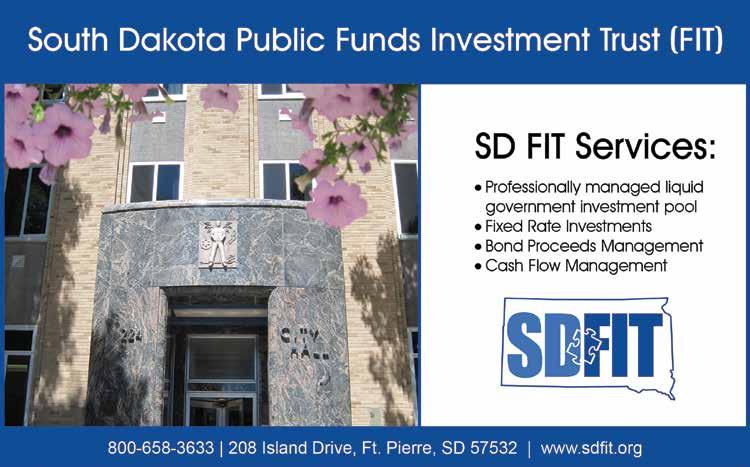
Trenching and Confined Space Entry Safety Equipment
Grant, SDML Workers' Compensation Fund
Due: Opened Jan. 1, awarded first-come, first-served
Provides funds towards equipment to mitigate the risks of trenching and confined space entry. Applicants must be a member of the SDML Workers' Compensation Fund. See grant application for full details.
Learn more/apply: www.sdmlwcfund.com
Traffic Control Device Grant, Street Maintenance Association
Due: April 1
Provides funds to offset the costs of Traffic Control Devices such as speed display units, traffic count units, and flashing warning signs.
Learn more/apply: www.sdmunicipalleague.org/page/ StreetMaintenance
Recreational Trails Program Grant, SD Game, Fish and Parks
Due: April 5
Provides partial reimbursement for approved trail projects including the construction of new public trails, rehabilitation of existing public trails, development of trail-related facilities, and educational programs that relate to recreational trails.
Learn more/apply: www.gfp.sd.gov/partnerships; Grants Coordinator Randy Kittle at 605.773.5490 or randy.kittle@state.sd.us
Industrial Park Grant, SD Dept. of Transportation
Due: April 15, July 15, and Oct. 15
Open to any local unit of government for the development of new or expanded access for new industry located within industrial parks. Provides for 80% of the construction costs. Grant size is limited to $500,000.
Learn more/apply: https://dot.sd.gov
Agri-Business Grant, SD Dept. of Transportation
Due: April 15, July 15, and Oct. 15
Open to any local unit of government for the development of new or expanded agri-business industries. Provides for 80% of the construction costs. Grant size is limited to $600,000.
Learn more/apply: https://dot.sd.gov
Hazard Mitigation Grant, SD Office of Emergency Management
Due: May 1
Funding is available for local governments and certain private-non-profit organizations to apply for hazard mitigation projects that will reduce the loss of life and property by lessening the impacts of future disasters.
Learn more/apply: https://dps.sd.gov/ emergency-services
Small Community Planning Grant Program, SD Dept. of Agriculture and Natural Resources
Due: Ongoing, awarded at any time on a first-come, first-served basis
Provides funds to hire an engineering consultant to develop a project specific engineering report. Open to systems serving a population of 2,500 or fewer. A community may receive up to $8,000 for a water engineering study and up to $10,000 for a wastewater related study.
Learn more/apply: https://danr.sd.gov
Due: April 1
Provides funds for an association member to attend the annual International Association of Chiefs of Police (IACP) Annual Conference and Exposition in October.
Learn more/apply: www.sdmunicipalleague.org/page/ PoliceChiefs
Human Resource HR School Scholarship
Due: April 1
Provides funds for an association member from a second- or third-class municipality to attend the SD Governmental Human Resource School (HR School) in June.
Learn more/apply: www.sdmunicipalleague.org/page/ HumanResource
Finance Officers' Training Scholarship
Due: April 1
Provides funds for continuing education for an association member. Applicants may apply for a scholarship to attend Finance Officers' School (FO School) in June or another professional development class/college course of their choosing.
Learn more/apply: www.sdmunicipalleague.org/page/ FinanceOfficers
Code Enforcement Training Scholarship
Due: April 1
Provides funds for an association member to attend a training of their choice to enhance their performance of duties as a code enforcement officer.
Learn more/apply: www.sdmunicipalleague.org/page/ CodeEnforcement
City Management Training Scholarship
Due: May 1
Provides funds for an association member to attend a professional development training of their choice. Learn more/apply: www.sdmunicipalleague.org/ CityManagement
Election Training
Four sessions in March, online webinars
Registration: Free
Due: One week prior to workshop
Multiple sessions assist officials in conducting municipal or school elections. Topics for each webinar available to view online. New finance officers and business managers are encouraged to attend all webinars. Sponsored by the Secretary of State's office, Associated School Boards of South Dakota, and the South Dakota Municipal League.
Remaining Training Dates: Webinar 3: March 11, Webinar 4: March 13, Webinar 5: March 21, Webinar 6: March 28
Learn more/register: www.sdmunicipalleague.org/ events
Electric Conference and Technology Expo
April 1-3, Watertown
Registration: $150 - SDMEA member municipality; $175 - Non-member
Features several presenters and topics regarding municipal electric utilities. Geared towards the operations aspect but is open to all employees interested in the electrical system. At least one representative from each SDMEA member municipality should attend.
Learn more/register: www.sdmunicipalleague.org/ events

Building Officials ICC Training
April 9 in Rapid City; April 11 in Sioux Falls
Registration: $85 - SDBOA member; $105 - Non-member
Due: March 26
Identifies and reviews selected significant changes from the 2021 International Building Code (IBC) to the 2024 edition. Focuses primarily on the fire- and life-safety aspects of the 2024 IBC.
Learn more/register: www.sdmunicipalleague.org/ events
Police Chiefs’/Sheriffs Association Spring Conference
April 16-18, Deadwood
Registration: $115 - full conference
Annual joint meeting of the SD Sheriffs' Association and the SD Police Chiefs' Association where members gather to learn about and discuss recent topics in law enforcement. Includes training tracts for law enforcement, corrections, and administrative personnel.
Learn more/register: www.sdmunicipalleague.org/ events
Street Maintenance Spring Training
April 24-27, Oacoma
Registration: Free - SDMSMA member; $65 non-member
Topics include work zone safety, signage, project management, contractor selection, and communicating with the public.
Learn more/register: www.sdmunicipalleague.org/ events
Code Enforcement Information and Training Conference
May 8-9, Fort Pierre
Registration: $50 - SoDACE member; $90 Non-member
Due: May 1
Annual spring meeting where members learn about and discuss current topics in code enforcement. Includes announcement of Code Enforcement Officer of the Year recipient.
Learn more/register: www.sdmunicipalleague.org/ events

ENDS
MARCH 1-3
NATIONAL
MARCH 8-12
MOUNTAIN
MARCH 14-17
SIOUX
MARCH 15-16
SPRING
MARCH 15-16 ST.
MARCH 15-16

28
AG
MARCH 30-31

















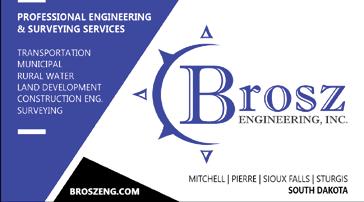




















Every state is a border state. South Dakota is no exception.
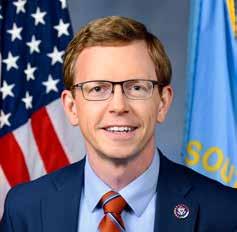
While on a drug trafficking trip, an illegal immigrant and his companion, both from Central America, carjacked and kidnapped an FBI employee outside of Red Shirt in West River. One of the men had re-entered our country after being deported. President Biden’s open border policies have allowed illegal immigrants to enter and re-enter our country and commit heinous crimes. Unfortunately, this isn’t the only time South Dakota has seen crime like this.
The effects of the border crisis are hitting way too close to home for many in South Dakota who are more than 1,000 miles from the southern border. We’ve seen increases in violent crimes, fentanyl overdoses, and illegal immigrants flooding cities that don’t have capacity to house them.
In the past three years, more than 7 million people have crossed the southern border illegally. The situation has worsened almost every month. This is the direct result of having open borders. This is a major problem, but we already know what some solutions are, like Trump’s effective Remain in Mexico policy which I support. If President Biden put it in place today, illegal border crossings would decrease by 70-80 percent almost immediately.
I’ve voted over 70 times for stronger border policies since I came to Congress. I’ve worked on and helped draft legislation that includes some of the strongest border policies ever brought before the House. These policies would stop the flow of illegal immigrants, restart construction of the border wall, hire more Border Patrol agents, and improve technology along the border. I voted in support of the Secure the Border Act, HALT Fentanyl Act, POLICE Act, Schools Not Shelters Act, and more.
I’ve been to the border and know how disastrous the situation is. The Senate and President Biden need to enact these bills the House has passed –and they need to do it soon. You cannot have a safe and secure nation if you don’t have safe and secure borders. ■
PIERRE, S.D. – On July 4, 2026, our nation will commemorate the 250th anniversary of the founding of the United States.
The journey toward this historic milestone is an opportunity to pause and reflect on our nation’s past, honor the contributions of all Americans, and look ahead toward the future we want to create for future generations.
“This state effort is being led by the America250th South Dakota
Commission,” said State Historian Dr. Ben Jones. “One of the goals of the South Dakota campaign is to collaborate with communities, states, tribes, federal agencies, nonprofits, cultural and educational institutions, governments, and private companies to celebrate and commemorate 250 years of American independence.”
“Through the work of hundreds of volunteers, we will explore the compelling, complex, and rich histories that make us who we are. The success
of this initiative will not be possible without key partners,” said Jones.
The commission is ready to sign up partners who are interested in being a part of the 250th anniversary celebrations by lending expertise and resources, crafting memorable events statewide, and helping engage all South Dakotans in this historic commemoration.
Those interested can sign up at https://bit.ly/PartnersA250sd. ■
Assistant Financial Manager - Brookings Municipal Utilities, City of Brookings, SD. Performs administrative and supervisory work in planning, organizing, and directing the activities of the accounting, billing and collection, and human resource departments. Serves as the principal officer in charge of the accounts, budgets, and internal audits of the utility. Wage Range: $6748.68-$8998.25 monthly. To learn more or to apply, please visit Recruitment (adp. com). Open until filled.
Assistant Public Works Director – City of Spearfish, SD. Assists in directing the operations of the Public Works Department and provides engineering and project management support for Department operations. This is a full-time position with a response time requirement. Knowledge and level of competency commonly associated with the completion of a baccalaureate degree in engineering. Experience sufficient to thoroughly understand the diverse objectives and functions of the subunits in the Department to direct and coordinate work within the Department, usually interpreted to require three to five years of related experience. Salary range: $97,760.00 - $119,100.80 annually DOQ. Learn more and apply at www.cityofspearfish. com. Open until filled. EOE.
Certified Police Officer – City of Flandreau, SD. Starting pay is $23+ per hour for a certified officer. Benefits include SDRS,
health, vision, and dental insurance. Officers work 12 hr. shifts with every other weekend off. Requirements include passing score on written exam, interview, and background investigation. Applicants must be a U.S. citizen, possess a valid driver’s license, have a high school diploma or GED equivalent, and be 21 years old at time of hire. Applications can be obtained at the Flandreau Police Department or submitted using the SD Law Enforcement Officer Standards applications. Open until filled. EOE.
City Administrator - City of Spearfish, SD. Responsible for directing, managing, and overseeing the day-to-day operations of the City of Spearfish while planning for and providing guidance to the Common Council regarding future operations. Should have knowledge and a level of competency commonly associated with the completion of a baccalaureate degree in a course of study related to the occupational field. A master’s degree is preferred. Candidates need experience sufficient to thoroughly understand the diverse objectives and functions of the departments in the city to direct and coordinate work. The ideal candidate will have ten (10) years of related experience, with at least five (5) years in a leadership capacity. Starting salary range $145,121.60 - $185,764.80; excellent benefit package. Apply at www. cityofspearfish.com. Open until filled. EOE.
Communications Officer – City of Pierre, SD. Works as part of a team operating the Central South Dakota Communications Center, the 911-Emergency Dispatch Center for central South Dakota. Receive calls for assistance from the public, document
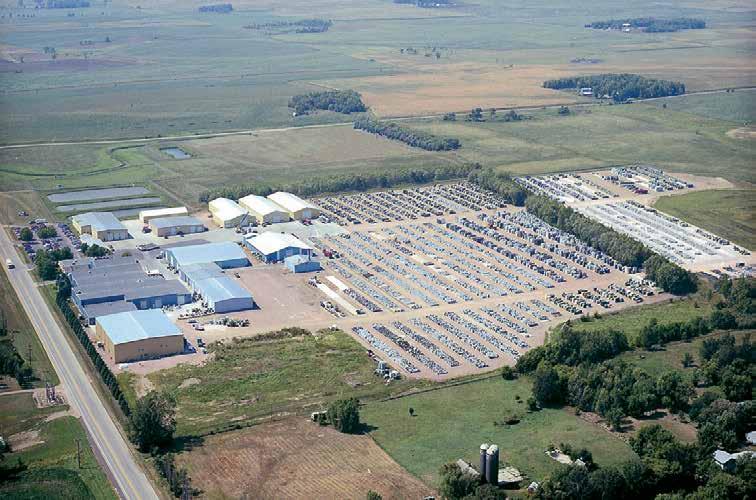

and dispatch appropriate public safety personnel for those calls. Receiving, processing, and sending radio communications for various Law Enforcement Agencies, Emergency Medical Services, and local Fire Departments. UP TO $3000 HIRING BONUS! Comprehensive benefit package. Apply to Human Resources Office, City of Pierre, Box 125, Pierre, SD 57501, Phone (605) 7737429 or www.cityofpierre.org. Open until filled. EOE.
Communications Officer - City of Spearfish, SD. Responsible for performing emergency and non-emergency communications functions. Requirements: Knowledge and level of competency commonly associated with completion of specialized training in the field of work, in addition to basic skills typically associated with a high school education. Sufficient experience to understand the basic principles relevant to the major duties of the position, usually associated with the completion of an apprenticeship/ internship or having had a similar position for one to two years. Starting wage $21.33 plus an additional $2.00 per hour rotating shift stipend ($23.33). Comprehensive benefits. ~Sign-On Bonus $4,000~ Learn more and apply www.cityofspearfish.com. Open until filled. EOE.
Communications Specialist (E-911) - City of Mitchell, SD. Responsible for answering emergency and non-emergency calls and for dispatching appropriate personnel. Provides guidance to callers until emergency personnel arrive on scene; receives and transmits radio and telephone communication; monitors security cameras; and greets and assists visitors at the customer
service window. No experience in the field is necessary; however, sufficient experience to understand basic principles relevant to the major duties of the position. Possession of or ability to readily obtain NCIC and EMD Certification. Starting wage: $22.477 per hour. Full-time benefits. Applications: Human Resources Office, City of Mitchell 612 North Main Street, Mitchell, SD 57301. 605.995.8417, www.cityofmitchellsd.gov. Open until filled.
Deputy Finance Director - South Dakota Bureau of Finance and Management, Pierre, SD. Seeking a financial leader to serve as the deputy finance officer for the Bureau of Finance and Management which is responsible for the day-to-day financial functions for the internal service bureaus in state government (Human Resources and Administration, Finance and Management, and Information and Telecommunications), including, cost accounting, setting rates, preparing and negotiating the Statewide Cost Allocation Plan (SWCAP), developing budgets, and handling the day-today billing and accounting functions of all bureaus. Supervises staff and serves as a strategic partner within the bureaus, which combine to have nearly 700 staff members and annual expenses of over $300 million. Salary: $95,000 - $110,000, depending on experience. Full description and apply online at https:// sodakprod-lm01.cloud.infor.com:1443/lmghr/xmlhttp/shorturl. do?key=OMT. Open until filled.
Development & Marketing Coordinator - City of Freeman, SD. Responsible for managing social media and websites, develop and implement marketing strategies to promote Freeman,

and actively participate in and collaborate with local and state organizations to support economic development efforts to draw visitors to our community. The ideal candidate will be selfmotivated, detail-oriented and able to work independently. If you are passionate about promoting economic growth, have a creative mindset and excel in digital marketing, this role is perfect for you. Pay is dependent on qualifications and experience. Interested candidates are invited to submit their resume to lisa@cityoffreeman.org or apply online at cityoffreeman.org/ employment. Open until filled. EOE.
Electrician / Traffic Signal Technician - City of Spearfish, SD. Responsible for general electrical repairs, locating of utilities, and the installation, repair, and maintenance of computerized traffic signal systems and related equipment. Position requires knowledge and level of competency commonly associated with completion of specialized training in the field of work, in addition to basic skills typically associated with a high school education. Position requires a Journeyman Electrician License in the State of South Dakota or ability to obtain licensure by comity/reciprocity within 6 months of the date of hire. Pay range $27.30 - $41.54 (plus $3.00 CDL stipend per hour) DOE. Learn more and apply at www.cityofspearfish.com. Open until filled. EOE.
Engineer I - City of Norfolk, NE (Pop 25,877). Performs technical work relating to engineering design, plan review, construction observation, and stormwater management. Assists in the development of designs, perform surveys and construction inspections for the installation of storm and sanitary sewers, water mains, street paving, bridges, sidewalks, and other public works projects. Creates and edits engineering drawings utilizing AutoCAD Civil 3-D. A four-year degree in Civil Engineering,

Construction Engineering, or Construction Management required. Two to four years of progressively responsible experience in the field of Civil Engineering or Construction preferred. Must be able to obtain a Nebraska Professional Engineer License within one to four years of hire. Salary range $5,544 - $7,621/mo. Excellent benefit package. Applications available at www.norfolkne.gov/ humanresources. Submit resume and cover letter along with completed application. First review of applications Feb. 20. Open until filled. EOE.
Engineering Technician/Project Manager - City of Yankton, SD. The City of Yankton is seeking qualified applicants for an Engineering Technician/Project Manager in the Public Works Department. This position is regular full-time which requires a degree in Civil Engineering or related field; American Concrete Institute Field Technician Grade 1 certification; four (4) years full time technical Auto CAD drafting, surveying and staking, construction review and testing related to public works and general construction work. Engineer-In-Training certificate preferred. The salary for this position is $64,020 to $81,050 (Range 43) per year, plus benefits. Open until filled. EOE.
Finance Officer – City of Delmont, SD. Responsible for maintaining financial, accounting, administrative and personnel services for all departments, in order to meet legislative requirements and support municipal operations. Reports to the Mayor and Council and is responsible for preparing financial statements, maintaining cash controls, preparing the payroll and personnel administration, purchasing, maintaining accounts payable and managing office operations. The Finance Officer is the official responsible for keeping all papers and records of the municipality. Must work within the Town of Delmont’s policies/procedures/ordinances and in compliance with South Dakota Codified Law. Questions: Barb Dozark, 605-779-2621, delmontfinance@midstatesd.net. Application and resume may be sent to: Delmont Finance Office, PO Box 202, Delmont, SD 57330. Open until filled.
Finance Officer – City of Lennox, SD. As a leader of the Lennox municipal team, the Finance Officer is in a highly responsible operations and oversight position. The Finance Officer administers the financial operations of the City, maintains the official records of the City, and performs related work as required. Additional work includes reconciling fund and account balances, preparing ancillary financial reports, and other tasks as directed by the City Administrator. Please visit cityoflennoxsd.com or call City Hall at 605-647-2286.
Does your community need a ordable housing?
South Dakota Housing provides solutions for you.
GIS Technician – City of Vermillion, SD. Under general supervision of the City Engineer, performs the creation and maintenance of the City’s planimetric, topographical, cadastral, and other GIS feature datasets. Responsibilities also include producing maps and graphics, extracting data as required, drafting work of average difficulty, and performing related work as required. In some instances, the position will also perform inspection work of a basic engineering nature and assist in all phases of construction inspection, field surveying, and CAD operations. View the full job description and submit an application at www.vermillion.us/jobs. Contact City Hall if you have any questions or concerns regarding this position. (605) 677 7050 or jackb@cityofvermillion.com. Open until filled.
Patrol Officer - City of Mitchell, SD. Responsible for the enforcement of federal, state, and local laws and the protection of life and property. Some of the job duties include: patrol the city to detect and deter criminal activity and traffic violations
and to provide assistance as needed; monitors commercial and residential areas for signs of criminal activity; responds to calls for service, including domestic disputes, assaults, burglaries, traffic accidents, lost or missing persons searches, public service requests; completes required reports and forms, including accident and incident reports. Starting wage: $27.386 per hour plus benefits. Applications: Human Resources Office, City of Mitchell, 612 North Main Street, Mitchell, 57301 605.995.8417, www.cityofmitchellsd.gov. Open until filled.
Patrol Officer - City of Pierre, SD. Performs law enforcement & public safety duties as necessary to maintain law & order in the City of Pierre. Must be at least 21 years of age, have a high school diploma or GED, & pass the police entry level examinations including a background investigation. Prior experience in law enforcement is desirable. Certified officer preferred. Comprehensive benefit package. Up to $3,000 hiring bonus. Apply: Human Resources Office, City of Pierre, Box 1253, Pierre, SD 57501, (605)773-7429, www.cityofpierre.org. Open until filled. EOE.
Planning Director - City of Spearfish, SD. Responsible for directing and administering planning and development activities for the City of Spearfish and for the administration of the city’s zoning ordinance, subdivision regulations, and comprehensive plan. Requirements: Bachelor’s degree in urban planning, regional planning, community planning, land-use planning, urban affairs, or a closely related field. Three to five years of progressively responsible planning experience, including at least two years in an urban environment, with some portion of the experience in a government-related position. American Institute of Certified Planner (AICP) certification is desired. Salary range: $97,760.00$119,100.80 annually, DOQ. Competitive benefit package. Learn more and apply online at www.cityofspearfish.com. Open until filled. EOE.
Planning Director/Building Inspector - City of North Sioux City, SD. Responsible for setting the agenda for the Planning Commission and acts as the liaison between the Planning Commission and the City Council. A bachelor's degree in urban planning or a related field is desired but will consider applicants with a significant history of relevant work experience. Salary is commensurate with similar positions depending on qualifications. Excellent benefits package. Full description at www.northsiouxcity-sd.gov. Submit cover letter and resume to the City Administrator by email to eric. christensen@northsiouxcity-sd.gov or by mail to The City of North Sioux City, Attn: Eric Christensen, 504 River Drive, North Sioux City SD 57049. Open until filled. EOE.
Police Officer - City of Spearfish, SD. Enforce local, state, and federal laws, prevent, and suppress crime and accidents, and promote public safety through community policing principles. Responsible for the investigation of criminal cases as assigned. Requirements: Knowledge and level of competency commonly associated with completion of specialized training in the field of work, in addition to basic skills typically associated with a high school education; possession of or ability to readily obtain South Dakota Law Enforcement Certification. Full-time position. Starting wage: $30.13 per hour. Competitive benefit package. $6,000 sign-on bonus. Housing allowance. Full description and apply at www.cityofspearfish.com. Open until filled. EOE.
Police Officer (Entry Level/Lateral Entry) - City of Vermillion, SD. Duties include performing varied assignments in motorized patrol, traffic control and enforcement, accident investigation,

preliminary and follow-up investigation at crime scenes, and assisting in public safety education programs. To learn more about the police officer position and to complete an application, please visit the City of Vermillion's job page: https://www.vermillion.us/ Jobs.aspx or if you have questions about the position please call/ email Jack Baustian at 605-677-7050 or jackb@cityofvermillion. com. Open until filled.
Project Engineer – City of Rapid City, SD. Responsible for performing Civil Engineering analysis, designing, contract administration, and project management of the City projects and programs. Demonstrates general knowledge of infrastructure systems including street, drainage, water, and sewer design and construction; acquires general knowledge of applicable engineering principles and practice. Utilizes industry-specific software for plan preparation and Civil Engineering design; collaborates with a multi-disciplinary team to ensure key objectives are met. Prepares complete project designs, specifications, cost estimates, bid documents, and contract documents for in-house projects; performs peer review of engineering and project plans. Salary: $80,135.62 yearly. Learn more an apply at https://www. rcgov.org. Closes March 12.
Public Health Director – City of Sioux Falls, SD. Bears ultimate responsibility for the overall operation and function of the Public Health Department, Falls Community Health (provider of primary health and dental care), and serves as the City Health Officer. Provide executive leadership of federally funded ambulatory health care delivery sites to ensure federal grant application submissions and full grant compliance, fiscal management, physician contract management, and submission of monthly, semiannual, and annual federal financial/operational reports. Monitor health status and understand health issues facing the community. HIRING RANGE DOQ: $5,853.60 - $7,395.20 biweekly. Full description and apply online at www.siouxfalls.gov/ careers. Open until filled. EOE.
Public Works Director (part-time) – City of Delmont, SD. Performs work in maintenance of all phases of water distribution and supply, wastewater collection system and lagoon, maintenance and repair of streets and alleys, maintenance of parks, dump ground, any and all city property. Questions: Barb Dozark, 605-779-2621, delmontfinance@midstatesd.net. Application and resume may be sent to: Delmont Finance Office, PO Box 202, Delmont, SD 57330. Open until filled.
Public Works Maintenance - City of Hoven, SD. Maintaining city streets, being the head water supervisor, wastewater supervisor, and airport manager. Assists with the maintenance of all City buildings and spaces including the airport, pool, landfill, and ball
field. Knowledge and experience with all types of equipment are desired. The person must have a valid SD driver's license. State water and wastewater certifications as well as a pesticide certification will be required to be obtained in the first two years of employment. Full-time position, salary to be set by the Hoven City Council. Insurance stipend, vacation, sick leave, and SD Retirement System. Contact Wendy Rausch at the City of Hoven, PO Box 157 Hoven SD 57450, or at 605-948-2257. Open until filled.
Public Works Maintenance – City of Philip, SD. Assist in all phases of maintaining the city streets, water distribution and wastewater system. Assist with the maintenance of public buildings and open spaces including the airport, rubble site and swimming pool. Knowledge and experience with all types of equipment is desired. Must hold a valid SD driver’s license. State water and wastewater certifications, and pesticide license must be obtained within two years of employment. Full time position. Wage DOE with an excellent benefit package. For more information, contact City Administrator Brittany Smith at 605-859-2175 or cityadmin@ philipsd.us Job description and applications at https://www. philipsd.us. Open until filled. EOE.
Senior Engineer – City of Rapid City, SD. As a member of the Engineering team within the Public Works Department, the Senior Engineer plays a crucial role in ensuring timely, efficient, and cost-effective outcomes through advanced engineering, project management, and program administration. You will actively
contribute to making the community a great place to live, work, and grow by engaging in the master planning, development, maintenance, and improvement of City infrastructure, thereby underlining the department's commitment to excellence in public service and infrastructure development. Salary: $90,193.34 yearly. Learn more an apply at https://www.rcgov.org. Closes March 12.
Staff Engineer – City of Rapid City, SD. As a member of Engineering Services, you will play an active role in making the community a great place to live, work, and grow by participating in the master planning, development, maintenance, and improvement of City infrastructure. Works under the supervision of a licensed Professional Engineer to perform planning and design functions in conjunction with assigned City projects; Performs engineering review of proposed private development projects to ensure compliance with City policies and regulatory standards; Performs project-related research and preliminary field investigations; Prepares reports on engineering related issues. Salary: $65,157.59 yearly. Learn more an apply at https://www. rcgov.org. Closes March 12.
Utility Superintendent- City of Baudette, MN. Performs professional work supervising the operations of city utilities and staff, assuring that systems are operating in an effective, safe, and fiscally responsible manner, conducting training, coordinating maintenance activities, responding to emergencies, and related work as apparent or assigned. Work is performed under the general direction of the City Council. Departmental supervision

is exercised over five personnel within the department. View the full position advertisement and apply at https://www. ddahumanresources.com/active-searches. Complete the application process by March 7.
Water Plant/System Specialist – City of Pierre, SD. Responsible for the operation and maintenance of the City’s new state of the art Water Treatment Facility and distribution systems. Qualified applicants must have the ability to learn water treatment techniques and be able to perform a multitude of hands-on maintenance activities that pertain to drinking water systems. Comprehensive benefit package. UP TO A $3000 HIRING BONUS! Wage offer will be based upon actual education and experience. Apply to: City of Pierre Human Resources Director, PO Box 1253, Pierre SD 57501, (605)773-7429, www.cityofpierre. org. Open until filled.
Water Wastewater Specialist – City of Lennox, SD. The City of Lennox, SD, is seeking a highly skilled and motivated Water and Wastewater Specialist to join our team. This role involves the monitoring, maintenance, and optimization of water distribution and wastewater collection and treatment systems. The ideal candidate will possess a background in water quality management, regulatory compliance, and troubleshooting in both water and wastewater treatment processes. Please visit cityoflennoxsd.com or call City Hall at 605-647-2286. Open until filled.
Water Works Superintendent – City of Aberdeen, SD. Responsible for managing the city's water works operations to deliver high quality potable water to customers. Ensures compliance with all relevant federal and state regulations; gathers data and prepares reports for compliance. Oversees daily processes, maintenance activities, watershed operations, and special projects. Supervises and provides training and direction to plant personnel. Develops annual budgets and administers approved funds. Resolves questions and concerns from the general public. Authorizes and monitors construction and repair projects relevant to potable water. Salary: $90,188.80 annually (23B) DOE. Learn more and apply at www.aberdeen.sd.us/jobs. Open until filled. EOE. ■
Find full descriptions, links to applications, more listings, or place an ad online:
Some SDML staff may have limited office avilability March 19-28 as they travel to and attend district meetings.

34 5 6789
10111213141516
17181920212223
24252627282930
Not later than the third Monday in March – A copy of the assessment roll must be furnished to each requesting municipality. (SDCL 10-3-28; See Hdbk., sec. 12.105)

Third Monday of March (Equalization meeting) – The governing body and the finance officer together representing the municipality with a member of the school board are required to meet for the purpose of equalizing the assessment of property. The Equalization Board may adjourn from day to day until the process has been completed within five days. (SDCL 10-11-13, 10-11-14; See Hdbk., sec. 12.120)
On or before the fourth Monday of March – After completing the equalization the clerk of the equalization board is required to deliver the assessment roll to the county Director of Equalization. (SDCL 10-11-21; See Hdbk., sec. 12.120)
At least six days prior to the last Tuesday of March – The county director


of equalization must publish a list of all tax exempt property in the county. This publication must be in the official newspapers of the county. (SDCL 10-415.1; See Hdbk., sec. 12.105)
On or before March 31 – The Urban Renewal Agency is required to file a report of its activities with the governing body. The report must include a complete financial statement for the preceding year. (SDCL 11-8-47) The Urban Renewal Agency must file a similar report with the Auditor-General on or by the same date. (SDCL 11-848; See Hdbk., sec. 14.200, The Urban Renewal Agency)
April election – Follow the Municipal Election Calendar for all election deadlines. ■




At least one day before the election – The Finance Officer must deliver the precinct registration lists to the local election officials. (SDCL 12-4-24; See Hdbk., sec. 7.170)
Second Tuesday of April – Annual elections for the officers of a municipality are required to be held. (SDCL 9-13-1; See Hdbk., sec. 7.050) A municipality may combine its election with a school district election and hold
this election on the school election date (third Tuesday in June) or on the first Tuesday in June, or in conjunction with the June primary. (SDCL 9-13-1.1; 9-1337; 9-13-6)
Second Tuesday in April – The consolidated board of equalization meets and completes equalization in no more than three weeks. (SDCL 10-1166 through 10-11-76; See Hdbk., sec. 12.120)
Within two days after the election is declared – The fi nance offi cer must notify all persons elected to office. The officials elected to office then have ten days after the first meeting of the month next succeeding the election to qualify for the office by filing an oath or affirmation of office. (SDCL 9-13-28) If the governing body chooses an election day other than the second Tuesday of April, as provided in SDCL 9-13, that Election Day must be established by
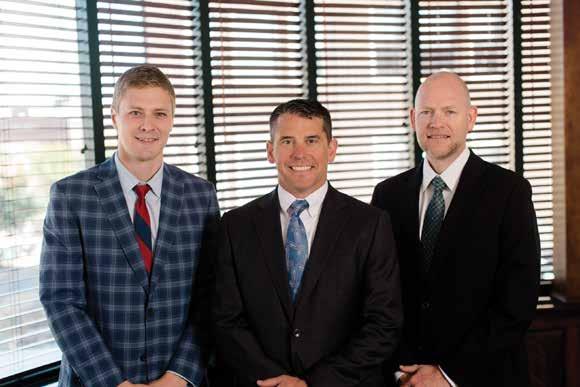
January 14 of the election year. (SDCL 9-13-1)
Within seven days following the election – Election returns are to be canvassed. (SDCL 9-13-24; See Hdbk., sec. 7.600)
Three weeks from Election Day – If a municipality has passed an ordinance requiring a secondary election and no candidate in a race involving three or more candidates receives a majority of the votes cast, a secondary election shall be held three weeks from the date of the first election. Provisions for tie votes in the first election are also provided for. The person receiving the highest number of votes at the secondary election is elected. (SDCL 9-13-26.1; See Hdbk., sec. 7.600)
June elections – Follow the Municipal Election Calendar for all election deadlines. ■






